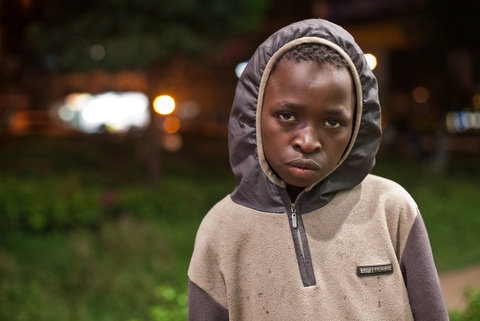Thirty years ago, when more people were traveling with cameras than ever before, Susan Sontag, in On Photography, observed that tourists had become so photo-hungry that travel was just “a strategy for accumulating photographs.” Like their counterparts a century earlier, who invaded Native Americans’ sacred spaces and had them alter ceremonies to be more photogenic, she warned that tourists risked doing damage in search of a “good shot.” In the age of digital cameras and photo-sharing websites, more people than ever are snapping and sharing pictures—and facing the question of how to do it responsibly.
Maz Livingston of Explore Worldwide has seen plenty of tourists addicted to the camera during her two decades in the adventure travel industry. On a trip to Iran, she was disturbed when a member of her tour group sneaked photos of widows leaving a village graveyard, where photography was forbidden.
Although Livingston loves taking pictures abroad, she feels irresponsible shooting can be destructive. “Sticking uninvited cameras into people’s faces, paying for or stealing photos and leaving without contributing to the community is very damaging,” she says. “Most people make these mistakes because they are unaware.”
Paying locals to pose may feel like giving back, but it encourages “a kind of prostitution” over time, Livingston says. Instead, she suggests tourists support traditions and economic development by buying local products or attending cultural performances.
Alison Wright, an award-winning photographer who has documented cultures around the world for more than 20 years, also believes that pictures are about more than taking. After photographing children in developing countries for years, she started Faces of Hope, a fund benefiting children in communities she has visited.
People who feel compelled to contribute directly should give to a community leader rather than individuals, Wright says, although she compensates subjects for their time if they go out of their way to work with her.
Wright disapproves of photographing people against their wishes, but she doesn’t always ask permission. Self-conscious subjects can distort a photo, and language barriers sometimes make asking impossible, she said. In such cases, “a smile goes a really long way,” she says.

Brendan Bannon, an American photojournalist based in Nairobi for the past five years, is more adamant about getting consent. Ninety percent of his subjects are aware that he is photographing them, although he makes an exception in crowded areas where he is swarmed with attention.
If possible, Bannon suggests spending time in a place to develop genuine trust. When photographing a Kenyan slum, he spent three weeks walking around with a community member without taking a single shot. “When I was first there, people said, ‘Don’t take my picture.’ A month later, they complained that I hadn’t taken their picture,” he said.
When time is scarce, you can still make a connection by approaching people “directly, honestly, openly,” he says.
People should be conscious that where they aim their lenses determines how they portray a place, Bannon says. Concerned about the ignorance he observed at home about life in Africa, Bannon decided that he needed to depict life beyond the public health crises and refugee camps his editors focused on. Last April, he partnered with journalist Mike Pflanz to produce Daily Dispatches, a one-month exploration of Nairobi through diverse daily portraits.
Daily Dispatches | Gender Defenders – Images by Brendan Bannon
Even when photographing people in difficult circumstances, Bannon tries to avoid a “pornography of pain.” Instead of catching a lone figure looking at the sky at a refugee camp, he might focus on a family cooking dinner. “I try to take pictures that show people have some agency in their lives,” he says.
Bannon attributes his perspective to his experience taking care of his mother, who had multiple sclerosis. “When someone is having a hard time as she was, there is a lot of stigma and fear around it,” he said. “I saw this extraordinary person facing challenges with more courage and resolve than people bring to their daily lives.”
Even photographers with the best intentions have to be careful about how the images they produce are used. “The person in the picture has often lost a lot of control,” Bannon says. A group of street children Bannon photographed for Daily Dispatches were the only subjects who insisted on seeing where the final product would appear. This was based on past experience: Pictures of one of their friends were still being used to promote a non-profit organization that had paid for three months of his schooling, even after the subsidy had ended and the boy had died on the streets.
Read Ethical Traveler's Reprint Policy.
